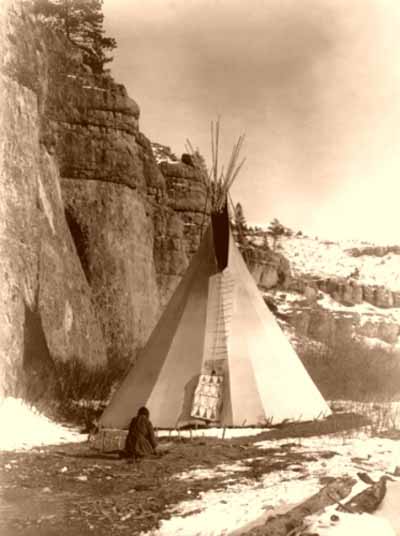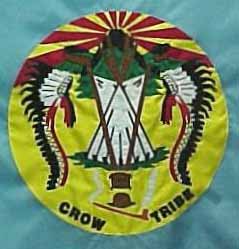
Flag

Flag
The Crow, also called the Absaroka or Apsaalooke, are a tribe of Native Americans who historically lived in the Yellowstone river valley and now live on a reservation south of Billings, Montana, and the current chairman of the tribal council is Carl Venne. Noted writer Joe Medicine Crow is tribal historian.
The tribal headquarters are located at Crow Agency, Montana. The tribe hosts a large pow-wow, rodeo, and parade annually; the 87th Crow Fair was held at Crow Agency from August 13 - August 15, 2004.
The Crow language is a member of the Missouri Valley Siouan languages. They split from the Hidatsa tribe in present-day North Dakota either around 1400-1500 CE (according to cultural anthropologists) or 900-1000 CE (according to linguistic anthropologists).
The traditional shelters of the Crow are tepees made with buffalo skins and wooden poles. They are known to construct some of the largest tepees. Inside they have mattresses to sleep on along the borders of their shelters, and a fire place, which the smoke escapes from through a hole in the top of the tepee. Many Crow families still own and use the tepee, especially when traveling. Crow Fair has been described as the largest gathering of tepees in the world.
Traditional clothing the Crow wore depended on gender. Women wouldn't dress very fancy because they were mostly around their shelters. They wore dresses made of mountain sheep or deer skins, decorated with elk teeth. They would cover their legs with leggings and their feet with moccasins. Crow women had short hair, unlike the men. The men dressed differently, with a shirt, trimmed leggings with a belt, a robe, and moccasins on their feet. Their hair was actually long, in some cases reaching or even dragging the ground, and sometimes decorated with certain items.
The Crow were a matrilineal (decent through the maternal line), matrilocal (husband moves in with wife's family), and matriarchal tribe (females obtaining high status, even chief). Women held a very significant role within the tribe.
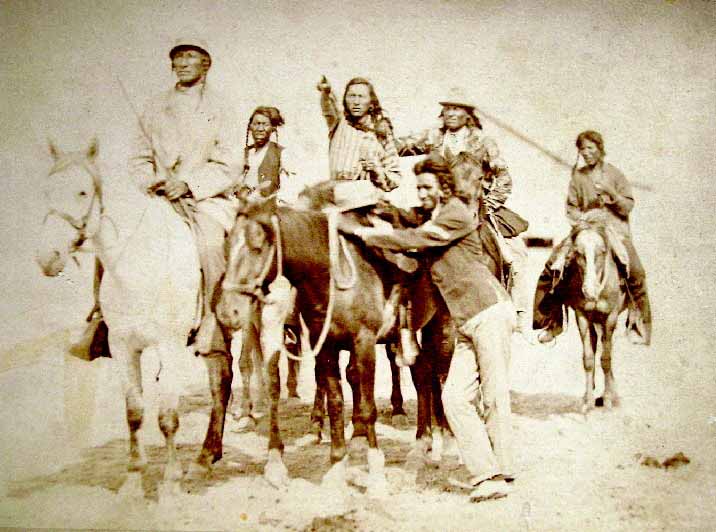
The name of the tribe, Apasaalooke, meaning "children of the large-beaked bird,", was a name given by the Hidatsa, a neighboring Siouan tribe. The bird, perhaps now extinct, was defined as a fork-tailed bird resembling the blue jay or magpie. French interpreters translated the name as gens du corbeaux (people of the crows), and they became known in English as the Crow. In 1743 the Absaroka encountered their first people of European descent, the two La Verendrye brothers from French Canada. The explorers called the Apasaalooke beaux hommes (handsome men). The Crow called the French Canadians baashchiile (persons with yellow eyes).
Some historians believe the early home of the Crow-Hidatsa ancestral tribe was near the headwaters of the Mississippi River in either northern Minnesota or Wisconsin; others place them in the Winnipeg area of Manitoba. Later the people moved to the Devil's Lake region of North Dakota before the Crow split from the Hidatsa and moved westward. The Crow were largely pushed westward by the intrusion and influx of the Sioux, who had been pushed westerly by European-American expansion.
Once established in the Valley of the Yellowstone River and its tributaries on the Northern Plains in Montana and Wyoming, the Crow eventually divided into three groups: the Mountain Crow, River Crow, and Kicked in the Bellies. Formerly semi-nomad hunters and farmers in the northeastern woodland, they picked up the nomadic lifestyle of the Plains Indians as hunters and gatherers and hunted bison. Before 1700, they were using dog travois for carrying goods.
They had developed a tradition of hunting bison on foot and used dogs to pull travois and carry goods. From about 1740, the Plains tribes rapidly adopted the horse, but the severe winters in the North kept their herds smaller than those of Plains tribes in the South. The Crow, Hidatsa, Eastern Shoshone and Northern Shoshone were noted as horse breeders and dealers, and developed relatively large horse herds. At the time, other eastern and northern tribes were pushing on to the Plains, in search of game for the fur trade, bison, and more horses. The Crow were subject to raids and horse thefts by horse-poor tribes.
The Crow were raided for horses by the powerful Blackfoot Confederacy, made up of the Gros Ventre, Assiniboine, Pawnee, and Ute. Later they had to face the Lakota and their allies, the Arapaho and Cheyenne, who also stole the horses rather than acquire them through trade. Their greatest enemies became the tribes of the Blackfoot Confederacy and the Lakota-Cheyenne-Arapaho alliance.
The Crow were allied with the northern Plains tribes of the Flathead (although sometimes they had conflicts); Nez Perce, Kutenai, Shoshone, Kiowa and Kiowa Apache. The mighty Iron Confederacy or Nehiyaw-Pwat developed as enemies (in Plains Cree it was Nehiyaw; in Assiniboine, it was called Pwat-sak). It was named after the dominating Plains Cree and Assiniboine peoples, with the latter including the Stoney, Saulteaux and Metis as the most powerful.
Their tribal territory stretched from what is now Yellowstone National Park and the headwaters of the Yellowstone River (E-chee-dick-karsh-ah-shay - 'Elk River') in the west, north to the Musselshell River, then northeast to the Yellowstone's mouth at the Missouri River, then southeast to the confluence of the Yellowstone and Powder Rivers (Bilap chashee - 'Powder River' or 'Ash River'), south along the South Fork of the Powder River, confined in the SE by the Rattlesnake Mountains and westwards in the SW by the Wind River Range. Their tribal area included the river valleys of the Judith River (Buluhpa'ashe - 'Plum River'), Powder River, Tongue River, Big Horn River and Wind River as well as the Bighorn Mountains (Iisiaxpuatachee Isawaxaawuua), Pryor Mountains (Baahpuuo Isawaxaawuua), Wolf Mountains (Cheetiish - Wolf Teeth Mountains) and Absaroka Range (also called Absalaga Mountains).
To acquire control of this area, they warred against Shoshone bands (called Bikkaashe - 'People of the Grass Lodges'), and drove them westward. They allied with local Kiowa and Kiowa Apache bands. The Kiowa and Kiowa Apache bands migrated southward, and the Crow remained dominant in their established area through the 18th and 19th centuries, the era of the fur trade.
The Ashalaho or Mountain Crow, the largest Crow group, split from the Awatixa Hidatsa and were the first to travel west. (McCleary 1997: 2-3)., (Bowers 1992: 21) Their leader No Intestines had received a vision and led his band on a long migratory search for sacred tobacco, finally settling in southeastern Montana. They lived in the Rocky Mountains and foothills on the present-day Wyoming-Montana border along the Upper Yellowstone River, in the Big Horn and Absaroka Range (also Absalaga Mountains) with the Black Hills comprising the eastern edge of their territory.
The Binneessiippeele, or River Crow, split from the Hidatsa proper, according to tradition because of a dispute over a bison stomach. As a result, the Hidatsa called the Crow Gixaa-icca - 'Those Who Pout Over Tripe' (Bowers 1992: 23; Lowie 1993: 272-275). They lived along the Yellowstone and Musselshell rivers south of the Missouri River and in the river valleys of the Big Horn, Powder and Wind rivers, (historically known as the Powder River Country), sometimes travelling north up to the Milk River.
The Eelalapito, or 'Kicked In The Bellies,' split off from the Ashalaho or Mountain Crow (Lowie 1912: 183-184). They claimed the area known as the Bighorn Basin, from the Bighorn Mountains in the east to the Absaroka Range to the west, and south to the Wind River Range in northern Wyoming. Sometimes they settled in the Owl Creek Mountains, Bridger Mountains and along the Sweetwater River in the south.
The Fort Laramie Treaty of 1851 with the United States confirmed as Crow lands a large area centered on the Big Horn Mountains: the area ran from the Big Horn Basin on the west, to the Musselshell River on the north, and east to the Powder River; it included the Tongue River basin. But, for two centuries the Cheyenne and many bands of Lakota Sioux had been steadily migrating westward across the plains.
By 1851 the more numerous Lakota and Cheyenne were established just to the south and east of Crow territory in Montana. These enemy tribes coveted the hunting lands of the Crow and warred against them. By right of conquest, they took over the eastern hunting lands of the Crow, including the Powder and Tongue River valleys, and pushed the less numerous Crow to the west and northwest upriver on the Yellowstone. After about 1860, the Lakota Sioux claimed all the former Crow lands from the Black Hills of North Dakota to the Big Horn Mountains of Montana. They demanded that the Americans deal with them regarding any intrusion into these areas.
Red Cloud's War (1866 to 1868) was a challenge by the Lakota Sioux to the United States military presence on the Bozeman Trail, a route along the eastern edge of the Big Horn Mountains to the Montana gold fields. Red Cloud's War ended with victory for the Lakota Sioux. The Treaty of Fort Laramie (1868) with the United States confirmed the Lakota control over all the high plains from the Black Hills of the Dakotas westward across the Powder River Basin to the crest of the Big Horn Mountains. Thereafter bands of Lakota Sioux led by Sitting Bull, Crazy Horse and others, along with their Northern Cheyenne allies, hunted and raided throughout the length and breadth of eastern Montana and northeastern Wyoming, which had been for a time ancestral Crow territory.
On June 25, 1876 the Lakota Sioux and Cheyenne achieved a major victory over army forces under General George A. Custer at the Battle of the Little Big Horn, but the Great Sioux War (1876 - 1877) ended in the defeat of the Sioux and their Cheyenne allies. They were forced from eastern Montana and Wyoming: some bands fled to Canada, while others suffered forced removal to distant reservations, primarily in present-day South Dakota and Nebraska west of the Missouri River.
The Apsaalooke were divided into three independent groupings, who came together only for common defense:
Binneessiippeele ('Those Who Live Amongst the River Banks'), today called River Crow or Ashshipite ('The Black Lodges')
Eelalapito (Kicked In The Bellies) or Ammitaalasshe ('Home Away From The Center', that is, away from the Ashkuale - Mountain Crow)
Traditional Crow shelters are tipis made with bison skins stretched over wooden poles. The Crow are historically known to construct some of the largest tipis. Inside the tipi, mattresses and buffalo-hide seats were arranged around the edge, with a fireplace in the center. The smoke from the fire escaped through a hole in the top of the tipi. Many Crow families still own and use the tipi, especially when traveling. The annual Crow Fair has been described as the largest gathering of tipis in the world.
The Crow wore clothing distinguished by gender. Women wore simple clothes - dresses made of deer and buffalo skins, decorated with elk teeth. They covered their legs with leggings during winter and their feet with moccasins. Crow women wore their hair in two braids, unlike the men. Male clothing usually consisted of a shirt, trimmed leggings with a belt, a robe, and moccasins. Their hair was long, in some cases reaching or dragging the ground, and often part was styled into a pompadour.
The Crows' main source of food was bison, but they also hunted mountain sheep, deer, and other game. Buffalo meat was often roasted or boiled in a stew with prairie turnips. The rump, tongue, liver, heart, and kidneys all were considered delicacies. Dried bison meat was ground with fat and berries to make pemmican.
The Crow had more horses than any other Plains tribe; in 1914 they numbered approximately thirty to forty thousand head. By 1921 the number of mounts had dwindled to just one thousand. They also had many dogs; one source counted five to six hundred. Unlike some other tribes, they did not eat dog but used them as guards, to carry burdens and to hunt. The Crow were a nomadic people.
The Crow had a matrilineal system. After marriage, the couple was matrilocal (the husband moved to the wife's mother's house upon marriage). Women held a significant role within the tribe.
Crow kinship is a system used to define family. Identified by Lewis Henry Morgan in his 1871 work Systems of Consanguinity and Affinity of the Human Family, the Crow system is one of the six major types among indigenous people which he described: Eskimo, Hawaiian, Iroquois, Crow, Omaha, and Sudanese.
The Crow Tribe of Native Americans live in the Great Plains area of the United States. The shaman of the tribe was known as an Akbaalia ("healer").The Mannegishi are bald humanoids with large eyes and tiny bodies. They were tricksters and may be similar to fairies. They have supposedly been sighted in Massachusetts and are known there as Dover Demons. Cirape ("younger brother") is a companion of the old coyote trickster spirit. Awakkule is also a trickster spirit, but occasionally helps people instead. Baaxpee is a spiritual power that can cause a person to mature, as well as unusual events or circumstances that force maturation. After transmogrification, the changed are known as Xapaaliia. Andiciopec is a warrior hero who is invincible to bullets.
Crow religion is the indigenous religion of the Crow tribe, Native Americans of the Great Plains area of the United States. The medicine people of the tribe are known as Akbaalia ("healer"). The Mannegishi, also called little people, are bald humanoids with large bulkey, pretty eyes and tiny, tan bodies. They were tricksters and may be similar to fairies.
Baaxpee is a spiritual power that can cause a person to mature, as well as unusual events or circumstances that force maturation. Baaxpee comes upon every human to make them into adults. After transformation, the changed are known as Xapaaliia. Andiciopec is a warrior hero who is invincible to bullets.
The Crow Indian Reservation in south-central Montana is a large reservation covering approximately 2,300,000 acres (9,300 km2) of land area, the fifth-largest Indian reservation in the United States. The reservation is primarily in Big Horn and Yellowstone counties with ceded lands in Rosebud, Carbon, and Treasure Counties. The Crow Indian Reservation's eastern border is the 107th meridian line, except along the border line of the Northern Cheyenne Indian Reservation. The southern border is from the 107th meridian line west to the east bank of the Big Horn River. The line travels downstream to Bighorn Canyon National Recreation Area and west to the Pryor Mountains and north-easterly to Billings. The northern border travels east and through Hardin, Montana, to the 107th meridian line. The 2000 census reported a total population of 6,894 on reservation lands. Its largest community is Crow Agency.
The seat of government and capital of the Crow Indian Reservation is Crow Agency, Montana.
Prior to the 2001 Constitution, the Crow Nation was governed by a 1948 Constitution. The former constitution organized the tribe as a General Council (Tribal Council). The General Council in essence held the executive, legislative, and judicial powers of the government, and was composed of all enrolled members of the Crow Nation, provided that females were 18 years or older and males were 21 or older. The General Council was a direct democracy, comparable to that of ancient Athens.
The Crow Nation, or Crow Tribe of Indians, established a three-branch government at a 2001 Council Meeting. The new government is known as the 2001 Constitution. The General Council remains the governing body of the tribe; however, the powers were distributed to a three-branch government. In theory, the General Council is still the governing body of the Crow Nation, yet in reality the General Council has not convened since the establishment of the 2001 Constitution.
The Executive Branch has four officials. These officials are known as the Chairperson, Vice-Chairperson, Secretary, and Vice-Secretary. The Executive Branch officials are also the officials within the Crow Tribal General Council, which has not met since July 15, 2001. These officials established the 2001 Constitution.
The Legislative Branch consists of three members from each district on the Crow Indian Reservation. The Crow Indian Reservation is divided into six districts known as The Valley of the Chiefs, Reno, Black Lodge, Mighty Few, Big Horn, and Pryor Districts. The Valley of the Chiefs District is the largest district by population.
The Judicial Branch consists of all courts established by the Crow Law and Order Code and in accordance with the 2001 Constitution. The Judicial Branch has jurisdiction over all matters defined in the Crow Law and Order Code. The Judicial Branch attempts to be a separate and distinct branch of government from the Legislative and Executive Branches of Crow Tribal Government. The Judicial Branch consists of an elected Chief Judge and two Associate Judges. The Crow Court of Appeals, similar to State Court of Appeals, receives all appeals from the lower courts. The Chief Judge of the Crow Nation is Angela Russell.
According to the 1948 Constitution, Resolution 63-01, all constitutional amendments must be voted on by secret ballot or referendum vote. In 2001, major actions were taken by the former Chairperson Birdinground without complying with those requirements. The quarterly council meeting on July 15, 2001 passed all resolutions by voice vote, including the measure to repeal the current constitution and approve a new constitution. An opposition has arisen to challenge the new constitution's validity. The challenge is now in Crow Tribal Courts awaiting a decision.
Critics contend the new constitution is contrary to the spirit of the Crow Nation, as it provides authority for the US Bureau of Indian Affairs (BIA) to approve Crow legislation and decisions. The Crow people have guarded their sovereignty and Treaty Rights. The alleged New Constitution was not voted on to add it to the agenda of the Tribal Council. The former constitution mandated that constitutional changes be conducted by referendum vote, using the secret ballot election method and criteria. In addition, a constitutional change can only be conducted in a specially called election, which was never approved by council action for the 2001 Constitution. The agenda was not voted on or accepted at the council.
The only vote taken at the council was whether to conduct the voting by voice vote or walking through the line. Critics say the Chairman ignored and suppressed attempts to discuss the Constitution. This council and constitutional change was never ratified by any subsequent council action. The Tribal Secretary, who was removed from office by the BirdinGround Administration, was the leader of the opposition. All activity occurred without his signature.
When the opposition challenged, citing the violation of the Constitutional Process and the Right to Vote, the Birdinground Administration sought the approval of the United States Department of the Interior (USDOI), Bureau of Indian Affairs (BIA). The latter stated it could not interfere in an internal tribal affair. The federal court also ruled that the constitutional change was an internal tribal matter.
The Crow Nation has traditionally elected a chairperson of the Crow Tribal Council biennially; however, in 2001, the term of office was extended to four years. The previous chairperson was Carl Venne. The chairperson serves as chief executive officer, speaker of the council, and majority leader of the Crow Tribal Council. The constitutional changes of 2001 created a three-branch government. The chairperson serves as the head of the executive branch, which includes the offices of vice-chairperson, secretary, vice-secretary, and the tribal offices and departments of the Crow Tribal Administration. Notable chairs are Clara Nomee, Edison Real Bird, and Robert "Robie" Yellowtail.
On May 19, 2008, Hartford and Mary Black Eagle of the Crow Nation adopted U.S. Senator (now President) Barack Obama into the tribe on the date of the first visit of a U.S. presidential candidate to the nation.[21] Crow representatives also took part in President Obama's inaugural parade. In 2009 Dr. Joseph Medicine Crow was one of 16 people awarded the Presidential Medal of Freedom.
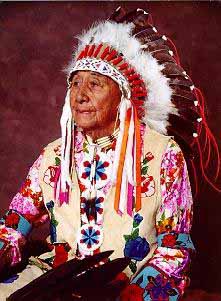
Tom Yellow Tail
In the documentary Native Spirit and the Sun Dance Way (2007), Thomas Yellowtail, a Crow medicine man and Sun Dance chief for more than 30 years, describes and explains the ancient Sun Dance ceremony, which is sacred to the Crow tribe. In the 1994 film Legends of the Fall, based on the 1979 novella of the same name by Jim Harrison, actor Gordon Tootoosis spoke Yellowtail's words to examine the preservation of a cultural and spiritual world before the coming of European settlers. In 2007 Medicine Crow's grandson Joe Medicine Crow appears on Ken Burns PBS series The War (documentary).
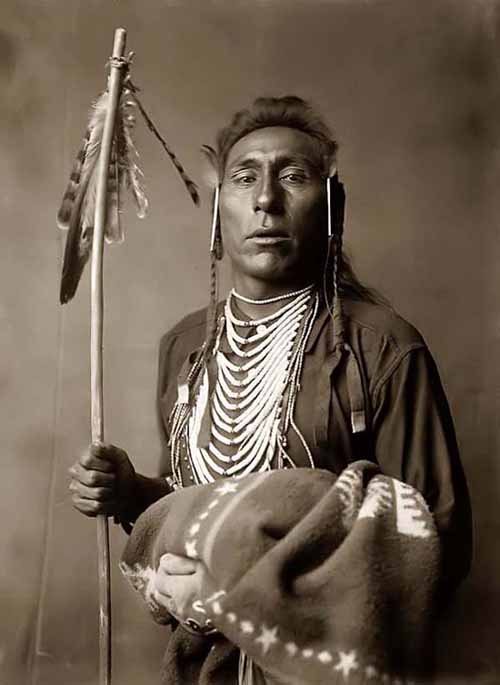
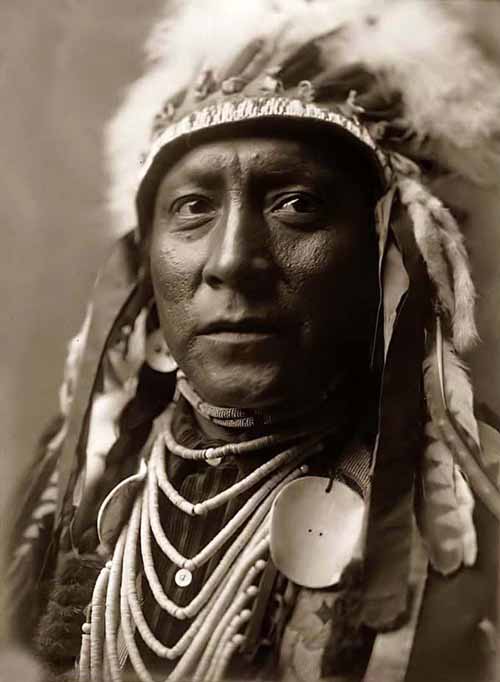

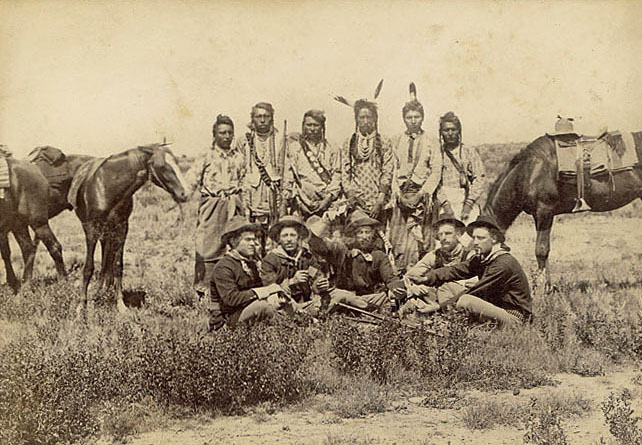
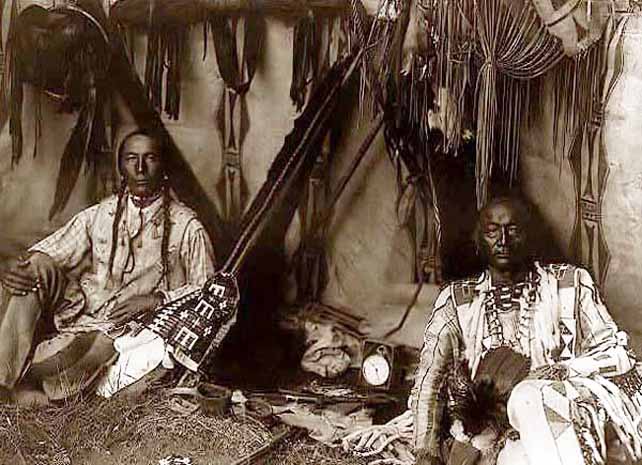
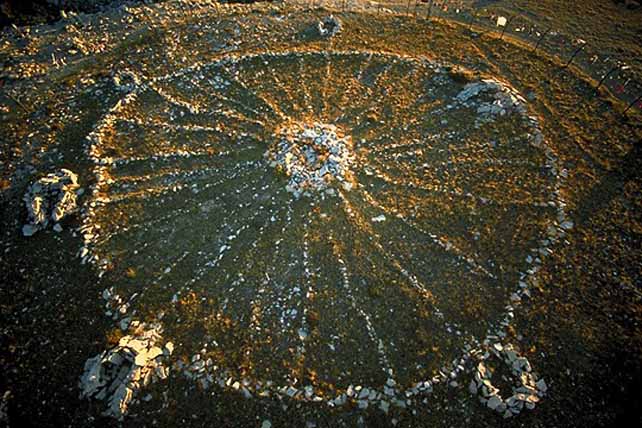
Crow Medicine Wheel
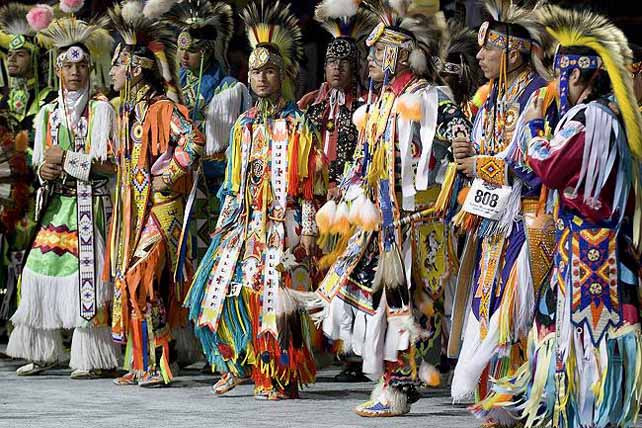
Crow Grass Dancers
